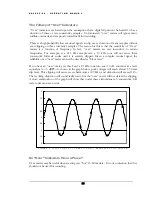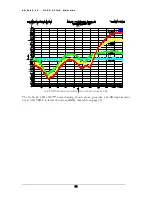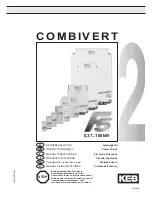
A D 2 4 0 2 - 9 6 - O P E R A T I N G M A N U A L
The Fallacy of “Over” Indicators
“Over” indicators are based upon the assumption that a digital clip cannot be heard if it has a
duration of three or less consecutive samples. Unfortunately “over” meters will ignore many
audible overloads, and are poorly suited for 24-bit recording.
There is a high probability that a musical signal can clip over a duration of many samples without
ever clipping on three successive samples. The reason for this is that the sensitivity of “Over”
meters is a function of frequency. In fact, “over” meters are very insensitive to certain
frequencies. For example, at a 44.1 kHz sample rate, a 10 kHz tone will not cause three
consecutive full-scale codes until it is severely clipped. Given a complex musical signal, the
reliability of an “over” meter can best be described as “hit or miss”.
If you have an “over” meter, try this. Feed a 10 kHz tone into any A to D converter at a level
equivalent to +3 dBFS. As shown in the graph below, peak voltages will reach almost 1.5 times
clip level. This clipping will cause severe harmonics at 20 kHz, and distortion will exceed 14%.
The resulting distortion will sound really nasty, but the “over” meter will not detect the clipping.
A close examination of the graph will show that under these circumstances, 3 consecutive full-
scale codes can never occur.
-2
-1.5
-1
-0.5
0
0.5
1
1.5
2
F I G U R E 3 . 1 0 k H z T O N E A T + 3 d B F S ( 1 A N D - 1 R E P R E S E N T C L I P L E V E L S )
Do “Over” Indicators Have a Place?
Over meters may be useful when creating very “hot” 16-bit masters. It is our contention that they
should not be used for recording.
25
















































